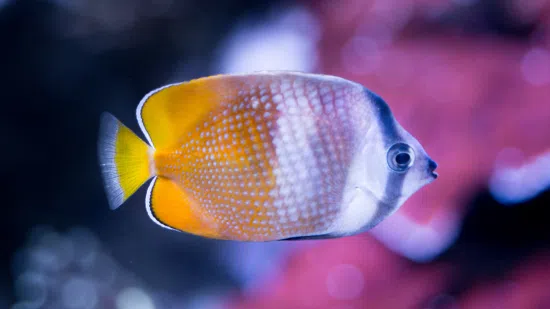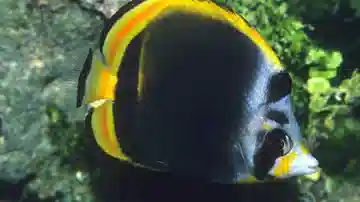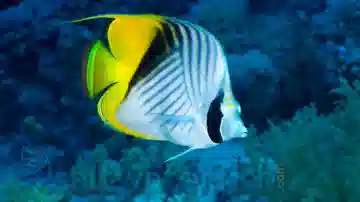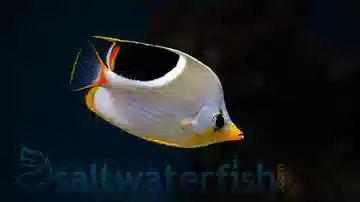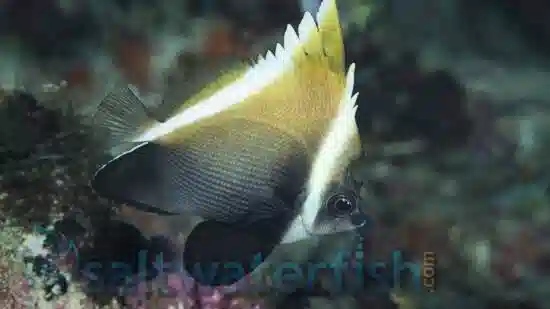Horned Heniochus
Heniochus varius
(1 Reviews)
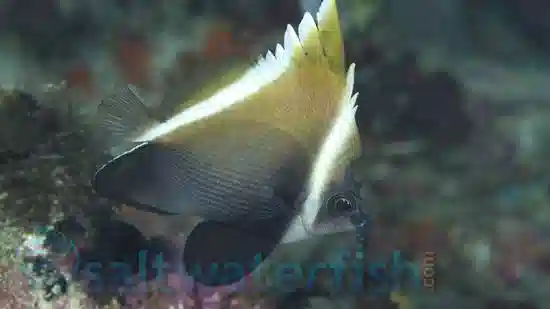
Horned Heniochus
Heniochus varius
(1 Reviews)
{{ item.name }}
Size: {{ item.extra_field_3 }}
${{ getFormattedPrice(item.saleprice) }} ${{ getFormattedPrice(item.price) }}
To join the waiting list, click here
Free Shipping
With
$199.00
or more in Marine Life.
More details...
Horned Heniochus Care Facts
| Care Level: | Moderate |
|---|---|
| Temperament: | Peaceful |
| Diet: | Omnivore |
| Reef Safe: | No |
| Minimum Tank Size: | 120 gallons |
| Max Size: | 7 inches |
Horned Heniochus Butterflyfish (Heniochus varius) for Saltwater Aquariums
Habitat: Discovering the Origin of Horned Heniochus Butterflyfish
Originating from the Indo-Pacific region, the Horned Heniochus Butterflyfish is commonly found in coral-rich areas, lagoons, and reef slopes. Its adaptability to various reef environments makes it well-suited for captivity.
Reef Compatibility: Navigating the Compatibility of Horned Heniochus
Considered not reef-safe, the Horned Heniochus Butterflyfish generally will nip on coral formations. However, caution is advised when introducing them to a reef tank, particularly with delicate corals or small-polyp stony corals.
Size and Lifespan: Dimensions and Durability of Horned Heniochus
In captivity, Horned Heniochus Butterflyfish typically reaches a size of 6 to 8 inches (15 to 20 centimeters). With proper care, they can live for 5 to 7 years, providing enthusiasts with a long-term and engaging addition to their marine setup.
Diet in Captivity: Nourishing the Health of Horned Heniochus
Maintaining the health and vibrancy of the Horned Heniochus Butterflyfish involves providing a balanced diet. Omnivores by nature, they thrive on a combination of high-quality marine flakes, pellets, frozen foods, and live offerings such as brine shrimp and mysis shrimp.
Aquaculture Availability: Sourcing Horned Heniochus for Your Aquarium
The Horned Heniochus Butterflyfish is primarily sourced from the wild, with limited availability through aquaculture. It is advisable to check with reputable suppliers for the most current information on aquacultured specimens.
Compatibility with Other Fish and Invertebrates: Harmonizing Horned Heniochus
Known for their peaceful demeanor, Horned Heniochus Butterflyfish are generally compatible with a variety of tankmates. Suitable companions include Blue Hippo Tang (Pomacanthus hepatus), Royal Gramma (Gramma loreto), Clownfish (Amphiprioninae), Firefish Goby (Nemateleotris magnifica), and Cleaner Shrimp (Lysmata amboinensis).
Sexual Dimorphism: The Mystery of Horned Heniochus Butterflyfish
Horned Heniochus Butterflyfish do not exhibit significant sexual dimorphism, making it challenging to distinguish males from females based on physical characteristics alone.
Juvenile to Adult Coloration Changes: The Artistry of Horned Heniochus
Juvenile Horned Heniochus Butterflyfish display a striking black and white pattern with elongated dorsal fin filaments resembling "horns." As they mature, the black coloration deepens, and the "horns" become more pronounced, maintaining the species' characteristic appearance throughout adulthood.
Temperament: Exploring the Peaceful Nature of Horned Heniochus
Renowned for their peaceful temperament, Horned Heniochus Butterflyfish are suitable for community aquariums. However, individual temperaments can vary, and careful monitoring during the initial introduction period is recommended.
Tank Requirements: Creating the Ideal Habitat for Horned Heniochus
- Minimum Aquarium Size: A tank with a capacity of at least 120 gallons is recommended to accommodate their size and provide ample swimming space.
- Water Conditions:
- pH: Maintain a stable pH level between 8.1 and 8.4.
- Salinity: Keep the salinity in the range of 1.020 to 1.025.
- Water Temperature: Maintain the water temperature within the range of 74-80°F (23-27°C).
- Water Flow: Moderate water flow is suitable, mimicking their natural reef habitat.
Common Names: Horned Heniochus as the Longfin Bannerfish
The Horned Heniochus Butterflyfish is also known as the Longfin Bannerfish.
Why Choose Saltwaterfish.com: Your Trusted Source for Horned Heniochus
- Wide Selection: Saltwaterfish.com provides a diverse range of marine fish, including the Horned Heniochus Butterflyfish, ensuring you can find the perfect addition for your aquarium.
- Quality Assurance: They prioritize sourcing healthy and vibrant specimens to give your new aquatic companion the best start.
- Expertise: With years of experience in the marine aquarium industry, Saltwaterfish.com can offer valuable advice and support to ensure your success as a marine hobbyist.
- Convenience: Ordering from Saltwaterfish.com provides a convenient way to access a variety of marine species, with shipping options available to deliver your fish safely to your door.
In conclusion, the Horned Heniochus Butterflyfish, with its unique appearance and adaptable nature, is a valuable asset to a saltwater aquarium. By adhering to proper care practices and providing a suitable environment, you can enjoy the beauty of this species while contributing to the diversity of your marine ecosystem. Consider Saltwaterfish.com as your trusted source for acquiring a Horned Heniochus Butterflyfish, enhancing your marine aquarium experience.
So cool! The seem to do real well, acclimate fast & start eating very quickly, as long as you don't have boisterous fish. Introduce them early, or with smaller or calmer fish. If they are stressed they'll probably just keep hiding, won't eat, and waste away. Very cool & hardy fish once acclimated, tho
Reviewed by: Lawrence Page on Oct. 9, 2016


